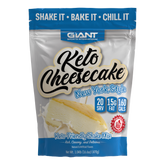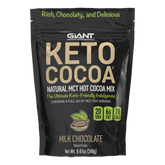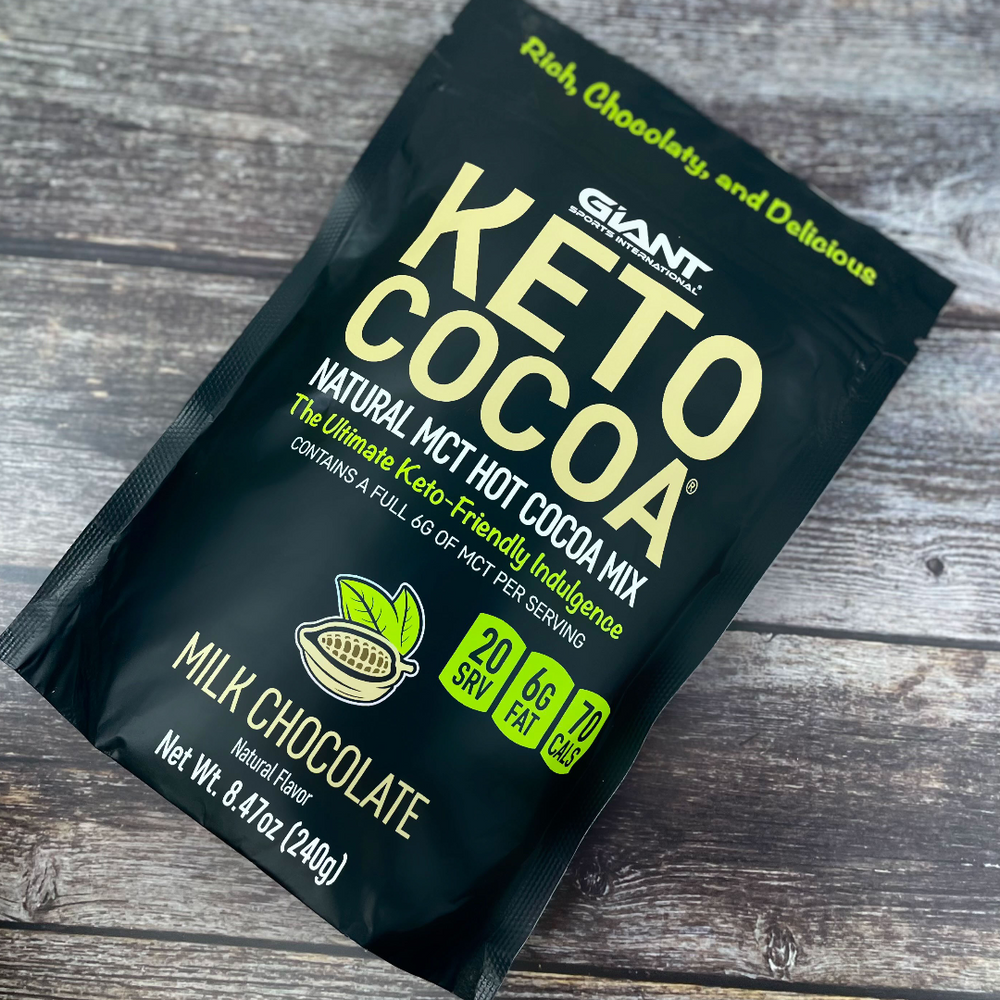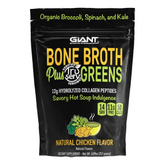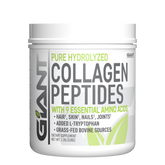Keto Bodybuilding: How to Build Muscles on a Low-Carb Diet

What You'll learn...
- What is the Keto Diet's Effect On the Body?
- Why Does Keto Cause an Initial Decrease in Strength?
- What is Mitochondrial Density?
- The Importance of Protein
- How Much Protein Should You Consume on Keto?
- How to Grow Muscle on Keto
- Targeted Keto Diet (TKD)
- Exercise That is Suited for the Keto Diet
- How to Boost Your Energy Levels on Keto
- Benefits of BHB When Working Out
- Supplementing Your Diet with Collagen
- Muscle Building Supplements
- How to Thicken a Shake
- Can you Build Muscle on a Low-Carb Diet?
- Final Thoughts
For many years, it was believed that carbs were necessary to build muscle. The reason for this is related to the way that the body takes carbs in, converts them to glucose, and uses the glucose for energy. When your body produces more glucose than your cells need for energy, the excess is stored as glycogen in the liver and in the muscle tissue. If the body needs energy and there is a limited supply of glucose, it can use the glycogen reserves.
When you workout, your body needs more fuel. Carbs have been considered necessary for building muscle because these glycogen reserves provide fuel for the extra energy and prevent the body from breaking down muscle tissue. Basically, carbs keep the glycogen stores full. Although this has long been considered the key to building muscle mass, the fact is that it isn’t the only way to achieve this goal. You can build muscle and increase strength while you reduce your fat gain on the keto diet.
What Is the Keto Diet’s Effect On the Body?
The keto diet has you reduce your carbohydrate intake to between 30 and 50 grams per day. At the same time, you will increase your consumption of healthy high-quality fats and proteins. As a result, your body will start by using up the glucose available in the bloodstream. Next, it will tap into the glycogen that is stored in your liver and muscle tissue, and once it is depleted, the transition will begin.
First, your liver will begin to metabolize fatty acids and produce ketones, which will be sent into your bloodstream. Your body will also start using stored body fat and dietary fats to produce more ketones, which will serve as an alternative source of fuel to provide energy for cell function. While your body is transitioning into ketosis, it uses ketones less efficiently and works harder to produce enough. However, once it completes the adaptation, it will run on ketones and you may experience increased energy and focus.
As long as you continue to minimize your carb intake, your body will remain in ketosis and burn fat for fuel. We have a great selection of low carb shakes available and one of our customer’s favorites is our Keto Cheesecake. During this transition, your body may have decreased strength and stamina, but it will pass once the adaptation is complete.
Why Does Keto Cause an Initial Decrease in Strength?
When you switch to the keto diet, it takes time for your body to adapt. Even if you fast and drastically reduce your carbs or take exogenous ketones to achieve ketosis more quickly, your body still needs time to adjust to the new method for creating energy.
You have to remember that your body has been using carbs to make glucose for your entire life, and even though this backup energy plan exists internally, it takes time for your body to realize that it is a permanent change. The longer you stay in ketosis, the more efficiently your body metabolizes fats for ketones that fuel all of your cell functions. You have to approach it as a long-term solution and have the patience to allow your body to complete its adaptation.
One of the benefits of ketosis is improved mitochondrial density, which provides more ATP energy so that you can work out longer. Your body can even adapt to the point where it no longer breaks down muscle and only breaks down fat to produce ketones for energy.
What Is Mitochondrial Density?
The mitochondria are organelles that produce energy in the cells. They take calories from food, oxygen, and heat from the sun to make energy in the form of ATP (adenosine triphosphate). Mitochondrial density is how much ATP the mitochondria produces and how it will be used. For example, one molecule of glucose produces 36 ATP molecules, but one fatty acid molecule produces 48 ATP molecules.
Once the body transitions to ketosis, it is gaining more energy than it does from glucose. In addition, your body doesn’t need to recover the way it does when it undergoes glycolysis (replenishing glycogen stores). The main job of the mitochondria is to maintain cellular respiration, which keeps oxygenated blood pumping throughout your body. Having higher ATP production allows your body to perform at a better rate.
The Importance of Protein
Often people worry that increasing protein intake will kick them out of ketosis. The reasoning behind this concern is that extra protein is turned into glucose in your bloodstream through gluconeogenesis. Of course, having glucose back in the bloodstream will cause your body to reduce its ketone production.
However, certain cells in your body need glucose for survival no matter what diet you are on. When you are on the keto diet, you are reducing your carbohydrate intake to between 30 and 50 grams a day, but you are not eliminating carbs. You need some carbs so that your brain can function properly.
With the rise of processed foods and sugary sweets, many people are simply eating more carbs than the human body should ever consume. It has led to obesity, diabetes, and inflammatory diseases throughout the country. The keto diet counters these harmful effects by recommending a low carb, high fat and protein diet that gives your body enough glucose through proteins and fats to function well along with the efficiency of ketones as a source of energy. It also allows you to use protein synthesis to build muscle without increasing unwanted fat.
How Much Protein Should You Consume on Keto?
How much protein you need is directly related to your level of activity. People who are less active need less protein, and vice versa. If you are a person who doesn’t exercise at all, you only need 0.8 grams of protein per pound of lean body mass. You can determine your lean body mass by subtracting the percentage of your body fat from your weight.
The more you exercise, the more protein you should consume. Often, people who are on the keto diet do not consume enough protein to use it to build muscle. The keto diet can help people to feel fuller than a high-carb diet will, and this may lead to a lower intake of protein. However, you can build muscle by ensuring that you are eating enough protein.

How to Grow Muscle on Keto
When you want to grow muscles on keto, you need to consume more calories than your body uses each day. You should increase your caloric intake by 150 to 500 calories per day, depending on your specific needs. If you take in one gram of protein for every pound of lean body mass, you can then increase your consumption of high-quality healthy fats for the additional calories.
You will not be able to build muscle if you are taking in fewer calories than your body burns each day. If you are having trouble building muscle on the keto diet, you can try a variation of the diet called the Targeted Keto Diet (TKD). This diet concentrates your carbohydrate intake around your workouts.
Rather than spreading your 50 grams of carbs throughout the day, you would consume all of your carbs up to an hour before or after your workout. This approach ensures that you are able to fuel your muscles with glycogen during your workout, but it won’t kick you out of ketosis because you will use all of the carbs during the workout.
You also need to choose carbs that are easily absorbed and digested. Foods that are high in fructose include fruits and fruit juices, and they should be avoided. When you consume foods that are high in fructose, the fructose goes to your liver to be converted into glucose, lactate, lipids, and glycogen.
On the other hand, glucose and dextrose go to your muscles and refill your glycogen stores. If you choose carbs such as grains and potatoes, the glucose will be quickly digested. You can also eat chicken for added protein before your workout.
Targeted Keto Diet (TKD)
The Targeted Keto Diet can be an advantageous way to ensure that you do not lose muscle when you exercise vigorously on the keto diet. If you start out on the standard keto diet, and you find that your energy levels are low or that your muscles tire easily, you should consider switching to the Targeted Keto Diet.
You need to give your body time to completely adapt to the new process of burning fat. It takes time for your body to become efficient at using ketones and burning fat, so the Targeted Keto Diet is a nice alternative during this transition phase. Once your body has completely adapted, you may be able to transition back to the standard keto diet.
However, using the Targeted Keto Diet can give you the boost you need to help you maintain your performance levels. The addition of carbs just before your workout will help your muscles to perform longer at higher intensity levels, and your muscles will use the glucose, so your body should not be out of ketosis for very long.
Exercise That Is Suited for the Keto Diet
If your workout includes exercises that require short bursts of energy, you may want to use the targeted Keto Diet so that you have the glycogen available for your muscles to perform these tasks with enough energy. On the other hand, your body burns fat more efficiently in aerobic exercise that is done at a steady pace, such as distance running or speed walking.
In fact, a 2017 study in The Journal of Psychology found that competitive walkers who were on the keto diet were able to burn more fat than those on a diet that included carbohydrates. However, they did find that it took more exertion for those on keto than those on a high-carb diet.
If you engage in activities where you burn more calories than you consume, you will have trouble adding muscle mass. If you want to add muscle mass, you need to increase the number of calories and protein in your diet.
Even when your body has transitioned to burning fat for energy, that does not mean that you will lose all of your fat. The keto diet calls for an increase in healthy fats as a part of your diet, and in addition to stored fats, your body will metabolize dietary fats to produce ketones. The end result is that if you want to lose fat, you need to reduce your calories to lose weight.
As you can see, there are many different approaches to exercise on keto, and it is important to define your goals and make a plan to achieve them. You may want to build muscle and lose fat, or you may want to just build muscle. Your goals will tell you whether you should switch to the targeted Keto Diet or add other supplements so that your body has everything it needs.

How to Boost Your Energy Levels on Keto
If you are on the keto diet and find that you simply do not have the energy you need to perform well, you may need a boost. It is important to remember that when you start your keto diet, your body takes time to become completely adapted to burning ketones for its energy, and during this time, it uses ketones less efficiently.
If you want to stay keto and maintain your levels of exercise, you may need to use a keto supplement. Ketone salts can raise your ketone levels and give you the extra energy you need during your workouts.
Ketone salt supplements are exogenous ketones that can help you maintain your energy level during exercise. In fact, a studies show that taking a beta-hydroxybutyrate (BHB) supplement before or during exercise is 28% more efficient than using carbohydrates alone. You can try a supplement such as Keto Cheesecake This supplement is a low carb and low sugar shake mix that will boost your workout.
BHB helps your body because it goes through a chemical reaction that increases cellular energy and helps to increase muscle protein synthesis. Muscle protein synthesis is important for repairing muscle damage that happens during exercise. If you don’t have enough protein during exercise, the opposite occurs.
Benefits of BHB When Working Out
The BHB in the Keto Kreamsicle mix is great for people on the keto diet. BHB is known to do the following:
- Replenish electrolytes
- Fuel body and brain with ketones
- Fight cravings
- Stay in ketosis
- Burn fat and maintain muscle
- Normalizes blood sugar levels
Supplementing with BHB will improve your workouts and help your body stay in ketosis. It isn’t recommended to substitute working out with sports. However, adding sports or even extreme sports would require more BHB. Be sure to measure the needed energy when adding in more activities.
Supplementing Your Diet with Collagen
As people age, their bodies produce less collagen. This protein helps with the health of the skin as well as relieving joint pain. Take a look at the following benefits of collagen.
- May slow aging of skin
- Helps relieve joint pain
- May prevent bone loss
- Boost in muscle mass
- Promotes heart health
- Increases strength of nails and hair
You can take a collagen supplement such as GSI Collagen to help decrease joint pain and help promote healthy skin and hair. This product is gluten-free and non-GMO, and it is Keto-friendly. It is made with Type 1 and Type 3 collagen peptides that come from grass-fed, pasture-raised bovine sources.
It has 12 grams of protein in one serving and a full spectrum of amino acids. It can be used as a post-workout shake. Collagen restores the lost proteins in your muscles and it helps to build and repair muscles, ligaments, tendons, and cartilage after you exercise because it is rapidly absorbed.
Another option is to try a supplement such as Bone Broth Plus Greens. It contains 12 grams of hydrolyzed collagen peptides as well as a serving of organic greens in every cup. It includes kale, broccoli, and spinach, and it has a natural chicken flavor. This supplement contains the benefits of a bone broth, but you can take the powder and simply add hot water. Each serving contains 11 grams of protein as well as many other essential vitamins and minerals.
Muscle Building Supplements
Everybody is different, and some people need a boost to add lean muscle mass. If you find that you aren’t getting enough protein, nutrients, and calories to add to your muscle mass, you can take a supplement such as Giant Sports Muscle Maker.
This supplement is gluten-free with no added sugars. It can keep your body in a nutrient-fed state for hours after your workout. You will be able to increase your muscle mass more easily with this product. It is scientifically designed to provide the ideal ingredients to help people bulk up and add strength. It helps all kinds of people from serious athletes to people who work out regularly. It gives your body the nutrient support that it needs to make sure that your body has the nutrients it needs before, during, and after intense workouts.
How to Thicken a Shake
There are a lot of options for using a keto thickener to add thickness to your shake. If you want to add thickness without changing the flavor, you can use ice. People often use milk or cream to add thickness as well as fat. If you want to avoid dairy products, you can use almond milk and fruits. Any of these agents will help thicken your shake, and if you find that it is too thick, add water to thin it to the desired consistency.
Can You Build Muscle on a Low-Carb Diet?
You can build muscle on a low-carb diet. There are many factors to consider as you make your plan, such as how long you have been eating low carb and what your goals are. If you are new to keto, you may need to use a variation of the keto diet, such as the Targeted Keto Diet so that your body will have enough energy.
Another way to improve your workout is with the use of exogenous ketones or other dietary supplements that provide your body with the nutrients it needs to promote healthy muscle repair and recovery. If your body metabolizes nutrients quickly, you may need a supplement to make sure that your body is nourished during and after your workout.

For many years, people believed that eating carbs was the only way to build muscle, but as more people reduce their carb intake and achieve ketosis, studies are starting to show that the body actually gains more ATP energy molecules from ketones than from glucose. In fact, once your body has transitioned to a state of ketosis and completed its adaption of this new metabolic state, it will use ketones efficiently and condition itself to burn fat while building muscle.
Final Thoughts
Building carbs, while you are on the keto diet, is possible, but you need to pay attention to your body’s needs. If you burn more calories than you consume, you will lose weight and muscle mass. It is important to remember to increase your intake of high-quality, healthy fats if you want to build muscle.
You should try to supplement your diet if you have just begun keto because people do experience a lack of energy and fatigue as their bodies transition from using glucose for fuel to using ketones. As your body goes through the adaption process, it will use ketones more efficiently, so be sure to use whatever modifications you need during the adaptation phase. You can use a Targeted Keto Diet during this time, or you can use supplements.
Remember that during ketosis, your body will burn stored fats as well as dietary fats. This means that if you are consuming high-quality fats, they will be used for energy. If you are consuming more high-quality fats than you can burn during your workout, you will increase your fat storage. The key to building muscle on a low-carb diet is to make sure that your body is getting enough protein and other nutrients, make sure that you have good energy levels and make sure that you take in more calories than you burn.
